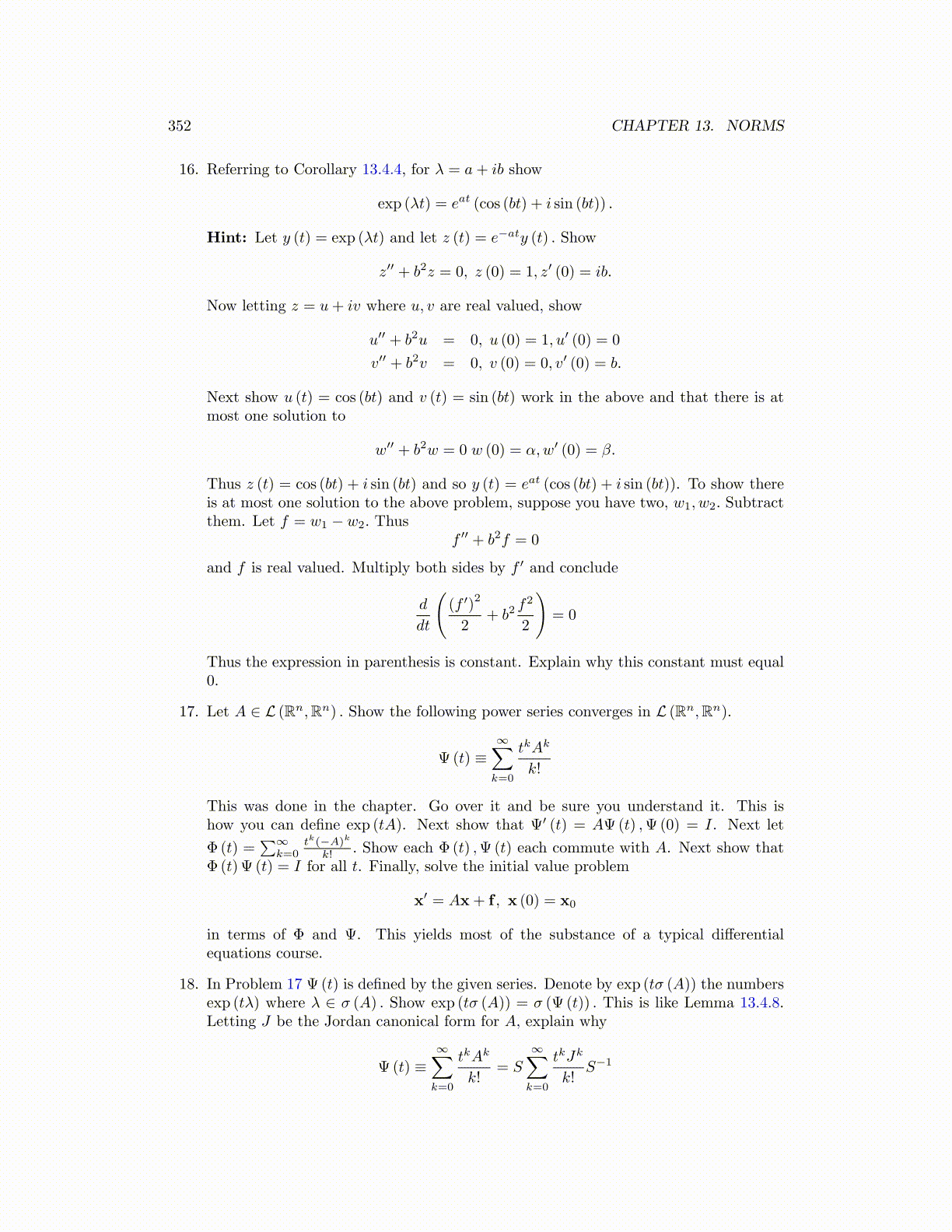
352 CHAPTER 13. NORMS
16. Referring to Corollary 13.4.4, for λ = a+ ib show
exp (λt) = eat (cos (bt) + i sin (bt)) .
Hint: Let y (t) = exp (λt) and let z (t) = e−aty (t) . Show
z′′ + b2z = 0, z (0) = 1, z′ (0) = ib.
Now letting z = u+ iv where u, v are real valued, show
u′′ + b2u = 0, u (0) = 1, u′ (0) = 0
v′′ + b2v = 0, v (0) = 0, v′ (0) = b.
Next show u (t) = cos (bt) and v (t) = sin (bt) work in the above and that there is atmost one solution to
w′′ + b2w = 0 w (0) = α,w′ (0) = β.
Thus z (t) = cos (bt) + i sin (bt) and so y (t) = eat (cos (bt) + i sin (bt)). To show thereis at most one solution to the above problem, suppose you have two, w1, w2. Subtractthem. Let f = w1 − w2. Thus
f ′′ + b2f = 0
and f is real valued. Multiply both sides by f ′ and conclude
d
dt
((f ′)
2
2+ b2
f2
2
)= 0
Thus the expression in parenthesis is constant. Explain why this constant must equal0.
17. Let A ∈ L (Rn,Rn) . Show the following power series converges in L (Rn,Rn).
Ψ (t) ≡∞∑k=0
tkAk
k!
This was done in the chapter. Go over it and be sure you understand it. This ishow you can define exp (tA). Next show that Ψ′ (t) = AΨ(t) ,Ψ(0) = I. Next let
Φ (t) =∑∞
k=0tk(−A)k
k! . Show each Φ (t) ,Ψ(t) each commute with A. Next show thatΦ (t)Ψ (t) = I for all t. Finally, solve the initial value problem
x′ = Ax+ f , x (0) = x0
in terms of Φ and Ψ. This yields most of the substance of a typical differentialequations course.
18. In Problem 17 Ψ (t) is defined by the given series. Denote by exp (tσ (A)) the numbersexp (tλ) where λ ∈ σ (A) . Show exp (tσ (A)) = σ (Ψ (t)) . This is like Lemma 13.4.8.Letting J be the Jordan canonical form for A, explain why
Ψ (t) ≡∞∑k=0
tkAk
k!= S
∞∑k=0
tkJk
k!S−1